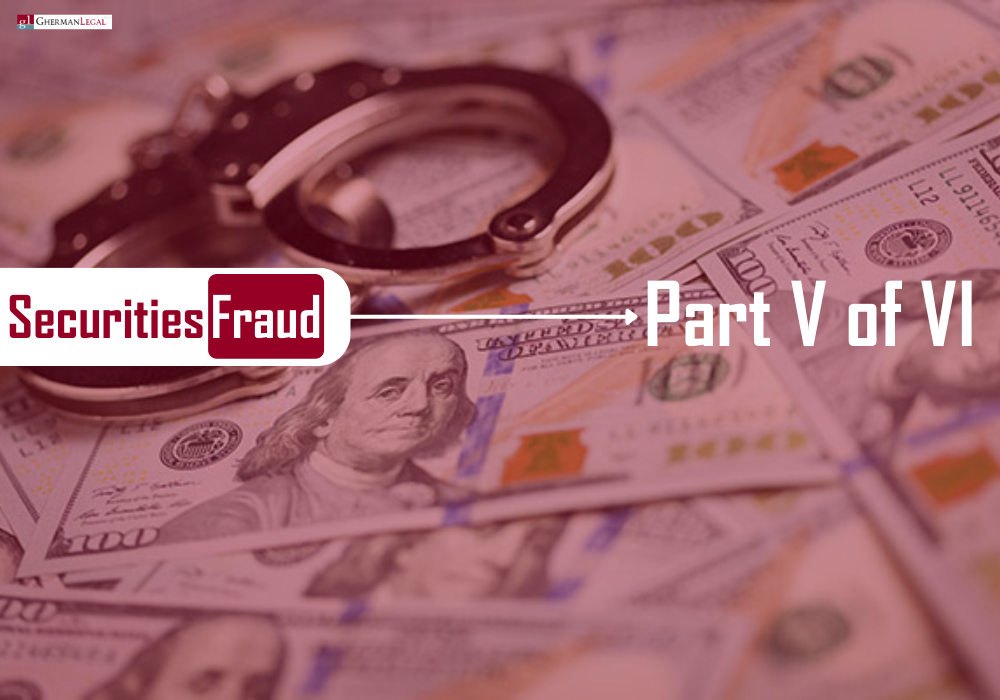
If you have been a victim of investment fraud, contact an investment fraud attorney today.
In a civil lawsuit based on violation of the anti-fraud provisions of the Securities Exchange Act of 1934, a/k/a Rule 10b-5 violation, the following must be found by a preponderance of the evidence:
1. That defendant used an “instrumentality of interstate commerce” in connection with the securities transaction involved in the case
2. That defendant made a false representation of a material fact (or omitted a material fact) in connection with the purchase or sale of a security
3. That defendant acted “knowingly” or with “severe recklessness”
4. That plaintiff “justifiably relied” on defendant’s conduct
5. That plaintiff suffered damages as a proximate result of defendant’s wrongful conduct
6. That plaintiff suffered damages.
5. That plaintiff suffered damages as a proximate result of defendant’s wrongful conduct
For the fifth element, plaintiff must prove that plaintiff suffered damage as a proximate result of defendant’s alleged misrepresentation or omission.
For damage to be the “proximate result” of a misrepresentation or omission, plaintiff must prove that the misrepresentation or omission was a substantial or significant contributing cause of the her alleged damages.
Ask yourself: If defendant had not engaged in misrepresentation or omission, would these damages have occurred? Plaintiff doesn’t have to prove that the misrepresentation or omission was the sole cause of the damage, only that it was a substantial or significant contributing cause.
